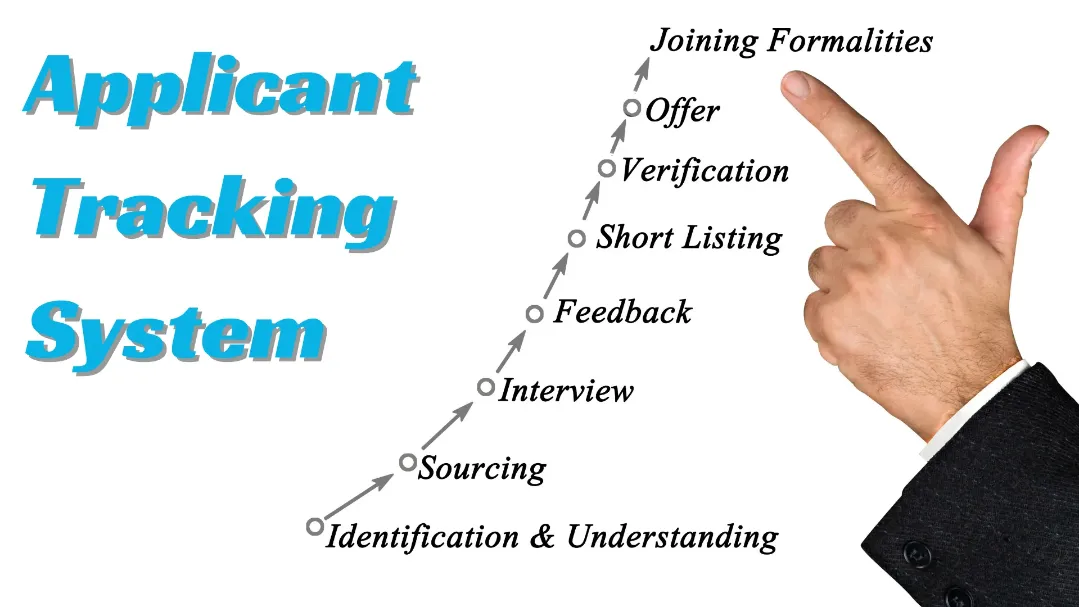A lot of work and planning goes into your recruitment process, from sourcing candidates to reviewing resumes and conducting interviews. Keeping track of each step and multiple candidates can be overwhelming, especially when you are hiring at scale. It takes an average of five candidates to make one hire. If your company has 100 jobs to fill, that is five candidates per job and 500 applications to be successful. How can you keep up? This is where your ATS comes in.
What is an ATS? And how does an ATS work? We break down the role of ATS in recruiting, why you should consider using one and how to determine which ATS is right for you.
What is an ATS?
An applicant tracking system, or ATS, is a tool that enables your company to track and measure each step of its recruitment process. An ATS collects and stores information about your applicants, such as where they were sourced and which stage of the application process they are at. Modern applicant tracking systems are more than a glorified spreadsheet. Today’s ATS includes end-to-end hiring solutions, like scheduling tools, candidate relationship management (CRM) software, and seamless integration with your human resource information system. An ATS transforms your recruitment process into a streamlined, efficient, and technologically advanced operation.
How do applicant tracking systems work?
Candidates are looking for application processes that are easy and user-friendly. The best applicant tracking systems allow people to easily apply for a position via any device without needing to log in.
This means that employers benefit from securing a larger pool of applicants, who can then be tagged a labelled accordingly, based on the info in their resumes.
More specifically, what are the benefits of an applicant tracking system?
Streamlining your hiring process becomes seamless with the implementation of an Applicant Tracking System (ATS). Imagine navigating through the pain points of your hiring workflow without a robust platform in place. In the absence of an efficient system, you might encounter inconsistencies in candidate tracking and misalignments among your hiring team, particularly if you rely on spreadsheets and emails. Building a robust talent pool and identifying top-notch candidates may prove challenging. The entire hiring journey, from job postings to interview scheduling and offer issuance, could be needlessly prolonged and arduous.
However, life post-ATS implementation presents a markedly improved scenario.
A reliable ATS:
-
Automates Administrative Tasks: Streamlines the administrative aspects of hiring, including bulk rejection emails, interview scheduling, and approval of job offers.
-
Facilitates Collaboration: Enhances communication among recruiters and hiring team members, making it easier to exchange feedback and stay organized throughout the hiring process.
-
Enhances Candidate Sourcing: Enables efficient candidate sourcing through job postings and other sourcing methods, ensuring a consistent flow of qualified candidates.
-
Prioritizes Candidate Experience: Promotes a positive candidate experience by providing tools to create effective application forms and career pages, reducing the time candidates spend on application submissions.
-
Maintains a Searchable Database: Establishes a comprehensive and searchable candidate database, allowing for efficient retrieval of relevant information when needed.
-
Generates Recruitment Reports: Provides insights into key metrics such as time to hire, enabling data-driven decision-making.
-
Facilitates Data Management: Simplifies data management with easy export/import features and seamless data migration capabilities.
On the other side, a good ATS:
-
Does not Evaluate Candidates: Acknowledges that humans are responsible for the evaluation and progression of candidates through the hiring process.
-
Does not Automatically Disqualify Candidates: Unless configured with qualifying questions in application forms, an ATS does not autonomously disqualify candidates.
-
Does not Identify Discrepancies: While it generates reports, interpreting these reports and identifying discrepancies in the hiring process remains the responsibility of the user.
-
Does not Dictate Processes: Provides a flexible framework for an efficient hiring process but allows customization to align with your specific needs.
-
Avoids Administrative Burden: Ensures that the actions are automated or can be executed with a simple click, minimizing administrative burden, and ensuring a smooth hiring experience






